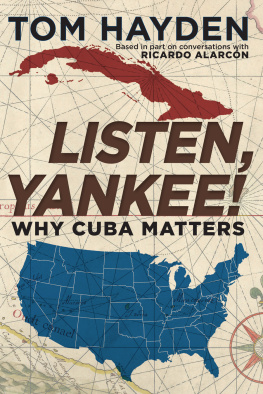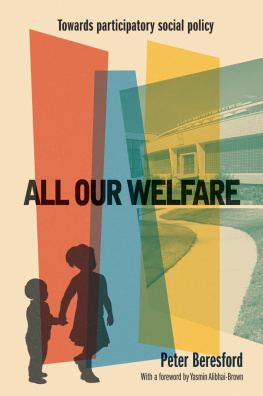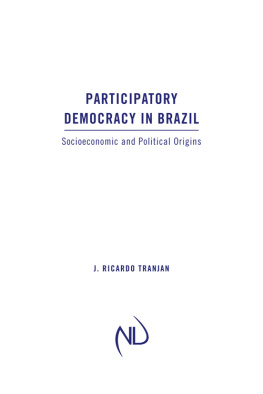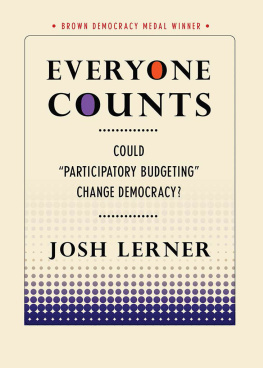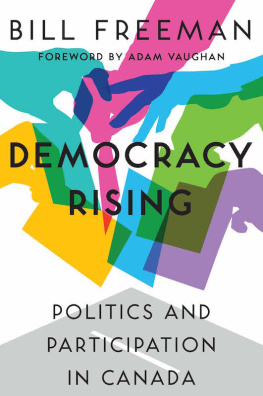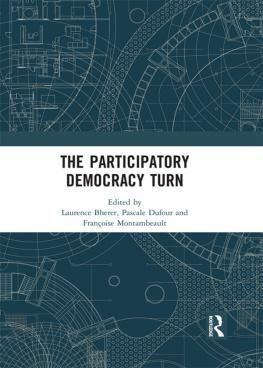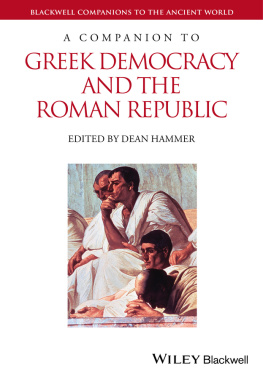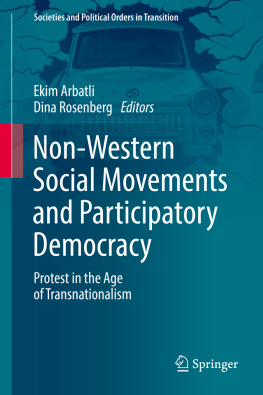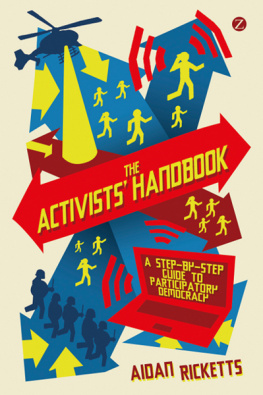INSPIRING PARTICIPATORY DEMOCRACY
I, uh, was one of the authors of the Port Huron Statementuh, the original Port Huron Statement not the compromised second draft.
Jeffrey The Dude Lebowski, The Big Lebowski, 1998
Students for a Democratic Society? Thats a hell of a focus group.
Don Draper, Mad Men, 2008
INSPIRING PARTICIPATORY
DEMOCRACY
STUDENT MOVEMENTS FROM PORT HURON TO TODAY
BY
TOM HAYDEN,
EDITOR
With reflections by Port Huron veterans
Becky Adams, Paul Booth, Robb Burlage, Mickey Flacks, Richard Flacks, Sharon Jeffrey Lehrer, Alan Haber, Barbara Haber, Casey Hayden, Charles McDew, James Monsonis, Maria Varela, and Michael Vester
Additional commentary by Robert Cohen, Diana Turk, Stacie Brensilver Berman, and Linda Gordon
Research assistance by Wesley Saver
First published 2013 by Paradigm Publishers
Published 2016 by Routledge
2 Park Square, Milton Park, Abingdon, Oxon OX14 4RN
711 Third Avenue, New York, NY 10017, USA
Routledge is an imprint of the Taylor & Francis Group, an informa business
Copyright 2013, Taylor & Francis.
All rights reserved. No part of this book may be reprinted or reproduced or utilised in any form or by any electronic, mechanical, or other means, now known or hereafter invented, including photocopying and recording, or in any information storage or retrieval system, without permission in writing from the publishers.
Notice:
Product or corporate names may be trademarks or registered trademarks, and are used only for identification and explanation without intent to infringe.
Cover photo: SDS National Council meeting, Bloomington, Indiana, 1963. (Photo credit: C. Clark Kissinger)
Back row, from left: Don McKelvey, Jon Seldin, Steve Max, Vernon Grizzard, Carl Wittman, Steve Johnson, Lee Webb, Richard Flacks, Robb Burlage, Rennie Davis Middle row, from left: Nada Chandler, Dan Millstone, Paul Booth, Todd Gitlin, Richard Flacks, Mickey Flacks
Front row, from left: Tom Hayden, Nancy Hollander, Mary McGroarty, Sarah Murphy
Library of Congress Cataloging-in-Publication Data
Inspiring participatory democracy : student movements from Port Huron to today / by Tom Hayden, editor; with reflections by Port Huron veterans Becky Adams ... [et al.].
p. cm.
Includes bibliographical references.
ISBN 978-1-61205-261-8 (hc : alk. paper) ISBN 978-1-61205-262-5 (pbk : alk. paper) ISBN 978-1-61205-277-9 (q) ISBN 978-1-61205-278-6 (e)
1. College studentsPolitical activityUnited States. 2. Student movementsUnited States. 3. New LeftUnited States. 4. DemocracyUnited States. 5. United StatesPolitics and government. I. Hayden, Tom.
LB3610.I526 2012
378.1981dc23
2012024052
Designed and Typeset by Straight Creek Bookmakers.
ISBN 13: 978-1-61205-261-8 (hbk)
ISBN 13: 978-1-61205-262-5 (pbk)

CONTENTS
| Robert Cohen |
| Tom Hayden |
| Becky Adams |
| Paul Booth |
| Robb Burlage |
| Mickey Flacks |
| Richard Flacks |
| Sharon Jeffrey Lehrer |
| Alan Haber |
| Barbara Haber |
| Casey Hayden |
| Charles McDew |
| James Monsonis |
| Maria Varela |
| Michael Vester |
| Robert Cohen, Diana Turk, and Stacie Brensilver Berman |
| Linda Gordon |
By Robert Cohen
Last fall, The New York Post spent months denouncing Occupy Wall Street (OWS) protesters as 1960s retreads, dirty hippies, and violent radicals. Similarly, on November 8, 2011, Wall Street Journal columnist William McGurn mocked the Occupy Wall Street Movement as a lark. For Woodstock wannabes, [for whom] its a romantic trip back to the Vietnam War protests. Occupy Wall Street has taken a high-profile part of Manhattan and turned it into an anarchist campground of the homeless and a haven for drug dealing.1
This evocation of the radical 60s, drugs, and anarchy is by now an old trope of the American Right. As Bernard von Bothmer documents in his book Framing the Sixties: The Use and Abuse of a Decade from Ronald Reagan to George W. Bush (2010), for generations right-wing politicians, dating back to Ronald Reagan, have used negative images of the 1960s (an emotionally charged caricature of that decade) that amount to demonization to discreditor at least try to discrediteven moderately liberal forces for political change. This was what that noise John McCain and Sarah Palin were making was all about during the last presidential race when they used this 1960sguilt by association discourse to try to slander Barack Obama. Remember? Palin repeatedly trumpeted Obamas connection to the left-wing terrorist Bill Ayersshe said Obama was palling around with terrorists,2 as if the Democratic presidential nominee was an honorary member of the Weather Underground, when in fact Obama was an 8-year-old child at the time when Weather formed. As a historian of the 1960s who has been reading these politicians and their campaigns 60s-bashing screeds for decades, I find them as significant for what they leave out as for what they use as targets of this demonization. For example, they never mention Berkeley Free Speech Movement leader Mario Savio (the subject of a biography I published in 2009), and they also are averse to mentioning or focusing upon the Port Huron Statement (PHS). In fact, von Bothmer interviewed scores of conservative Republican politicos for his book Framing the Sixties and not one of them mentioned the PHS or Savio. And I think there are pretty much identical reasons why neither Savio nor the PHS has been a major target of this 60s-bashing. Neither the PHS nor Savios speeches are susceptible to being caricatured to fit the Republican cartoon version of the 1960s as a violent, irrational, frighteningly subversive, drug-filled, immoral nightmare. Yes, it is true that a couple of extreme right-wingersDavid Horowitz and Robert Borkhave tried to treat the PHS as a commie plot, but this attempt to mistake the New Left for the Old Left never gained any traction with Republicans involved in the real world of electoral politics, probably because that argument is so over the top (the PHS, after all, criticized both sides in the Cold War, and advocated participatory democracy) that it never had the slightest chance of resonating with voters, especially since the Cold War has been over for decades.
The PHS represents a part of the 1960s that the American Right would prefer we forget: the early 1960s, when Students for a Democratic Society (SDS) activists at Port Huron, Student Nonviolent Coordinating Committee (SNCC) civil-rights organizers in Mississippi, and Free Speech Movement protesters at Berkeley were organizing nonviolently to make America a more democratic, egalitarian, and free society. The only activist students who were violent in the early 1960s were not organizers on the Left, but racists on the Right who, at the University of Georgia in 1961 and the University of Mississippi in 1962, fomented segregationist riots to oppose the admissions of the first black students on their Deep South campuses. As for the student Left in the Port Huron era, these activists were doing historic work envisioning a new America, and struggling to push the nation beyond its Cold War limitations, away from the arms race, counter-revolutionary military coups and wars, the anti-democratic legacies of Jim Crow and Joseph McCarthy, and the paralysis of political indifference and apathy. The early New Left aspired to a reinvigorated form of political community that the Port Huron Statement termed


